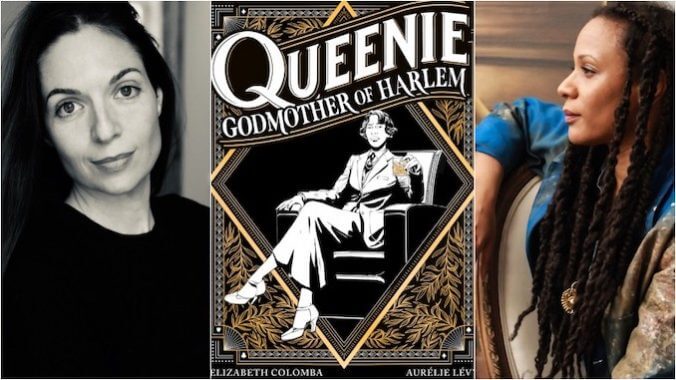Graphic Novel Queenie Distills the Life Story of Infamous Gangster Stephanie St. Clair, Godmother of Harlem

By most measures, Stephanie St. Clair lived an extraordinary life. Known as the Queen of Harlem, the Queen of Numbers, Madame Queen, and simply, Queenie, she was tough as nails, savvy, viscous, and supremely intelligent. Born into plantation life in Martinique, she survived a traumatic childhood and escaped to France as a teen. A few years later, St. Clair arrived in America and rose to power in New York, becoming one of the most successful gangsters to come out of the 20th century. Despite that, St. Clair’s story has been mostly brushed over in comparison to her contemporaries like Lucky Luciano, Ellsworth ‘Bumpy’ Johnson and Dutch Schultz.
Queenie: Godmother of Harlem, a new graphic novel by acclaimed artist Elizabeth Colomba and screenwriter Aurelie Levy is looking to change that. Set to release on Jan. 17 via Abrams Books, Queenie is an enthralling look at St. Clair’s rise and rule during the Harlem Renaissance. While details are scarce about her youth, St. Clair spoke fluent French and English as well as Spanish and was one of many African Americans that joined the Great Migration in the early 1900s. As Harlem flourished around her with the new music, art, and literary scene, St. Clair built up a numbers racket akin to the modern lottery, which netted around $100,000 for Queenie at its height. Comparatively, in 1930 the average person was making $1,550 a year, a month of rent cost around $50 and even the President of the United States was only making a salary of $75,000.
Colomba, whose mother is from Martinique, told Paste she first heard about St. Clair a few years ago, sparking the inspiration for the book. Traditionally a painter, Colomba said she instinctively reached for her brushes and canvas after hearing Queenie’s tale, but as she researched further, the more she wanted to share St. Clair’s full story. It wasn’t until Colomba saw a Kerry James Marshall retrospective at the Met Breuer by ??The Metropolitan Museum of Art that the idea to create a comic book started to form.
“It was always important to her that both my sister and I were aware of and knowledgeable about persons that populated our history—whether intellectual figures like Cesaire, Fanon, or Zobel, or like Stephanie: a woman who chose to play her cards altogether differently,” she said. “I drew five pages and talked to Aurelie about Stephanie St Clair and the idea of a graphic
novel. She introduced me to her editor Stephen Carriere who fell in love with the project instantly.”
-

-

-

-

-

-

-

-

-

-

-

-

-

-

-

-

-

-

-

-

-

-

-

-

-

-

-

-

-

-

-

-

-

-

-

-

-

-

-

-








































